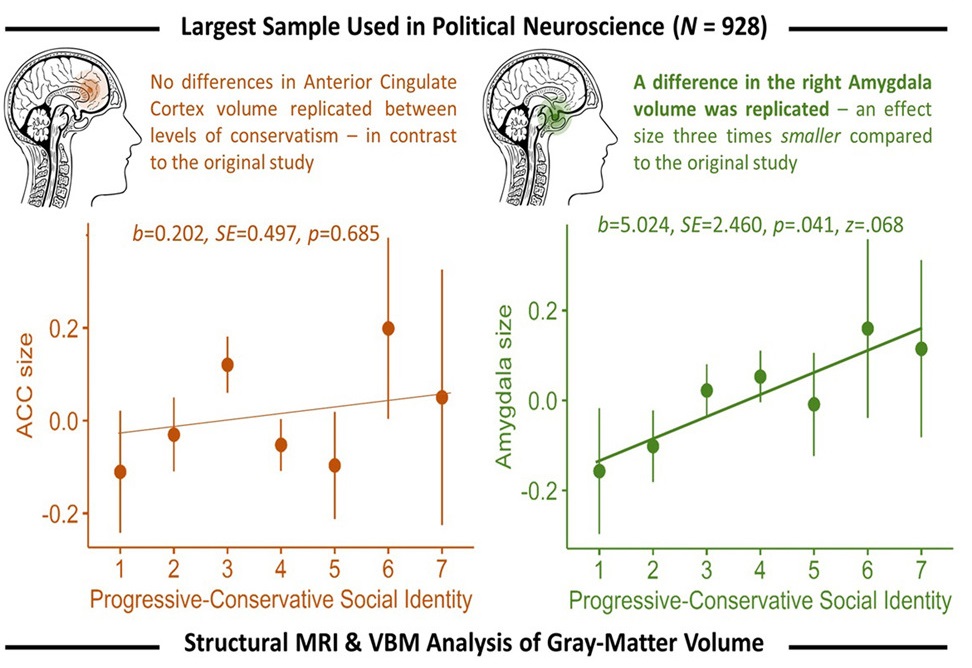It often feels like conservative and liberal voters have next to nothing in common, and it turns out their differences extend right down to the structures in their brains. While in the past much has been made of these contrasts, a new study has found that they’re less extensive than many believe – but they are still there. And no one was more shocked than the researchers themselves.
“It was really a surprise that we replicated the amygdala finding,” said first author Diamantis Petropoulos Petalas in a statement, referring to a 2011 study that was widely shared after concluding that there could be a link between brain structure and political affiliation. “Quite honestly, we did not expect to replicate any of these findings.”
But replicate them they did. Petropoulos and the team, from The American College of Greece and the University of Amsterdam, used MRI scans from 928 Dutch individuals aged 19-26. The sample – which was 10 times larger than the 2011 study’s – was representative of the political landscape in the Netherlands. The country has a multi-party system, thus enabling the researchers to look at a spectrum of beliefs across conservative and liberal ideologies.
By comparing the brain scan data with questionnaires asking participants about their political views and identity, the researchers were able to start seeing some patterns.
As the 2011 study found, there was an association between conservative views and increased gray matter in the amygdala, a structure in the brain’s temporal lobe that’s part of the limbic system.
“The amygdala controls for the perception and the understanding of threats and risk uncertainty, so it makes a lot of sense that individuals who are more sensitive towards these issues have higher needs for security, which is something that typically aligns with more conservative ideas in politics,” explained Petropoulos.
The association was dependent on someone’s political party affiliation – those who identified with a party that that has left-wing economic policies, but conservative social leanings, had more gray matter in their amygdalae than those who identified with more broadly progressive parties.
“That speaks to the idea that we’re not talking about a dichotomous representation of ideology in the brain, such as Republicans versus Democrats as in the US,” Petropoulos said, “but we see a more fine-grained spectrum of how political ideology can be reflected in the brain’s anatomy.”
However, the association the team observed was three times weaker than that found in the 2011 study. The amygdalae of conservative-leaning people are larger than those of liberal voters, but only by the equivalent of about a sesame seed.
Another finding from the 2011 study that the team were not able to replicate was an association between conservative politics and a smaller volume of gray matter in another brain region, the anterior cingulate cortex (ACC). They did, however, uncover something new – a positive association between gray matter in the right fusiform gyrus and conservative social and economic values.
“These regions have to do with facial recognition, so it makes sense that they might be involved when one is thinking about political issues, because political issues often remind us of the political personas that represent ideology on those issues,” Petropoulos said. “Just the memory of the face of a politician, for instance, might make the fusiform gyrus light up a little.”

Summary of key findings of the study compared with the 2011 data.
Image credit: Petropoulos Petalas et al, iScience
MRI studies like this can only provide part of the puzzle – they can tell us about brain anatomy, but further studies will be needed to look at functional connections between different brain regions.
Overall, the authors say their approach helps add some valuable nuance to these kinds of investigations.
“We see ideology as a complex, multidimensional product; that includes different attitudes on social and economic matters, as well as identification with progressive or conservative ideals,” said Petropoulos; “it’s really not just about the left or the right.”
The study is published in the journal iScience.
Source Link: Conservative And Liberal Voters’ Brains Are Different, But Not As Much As We Thought